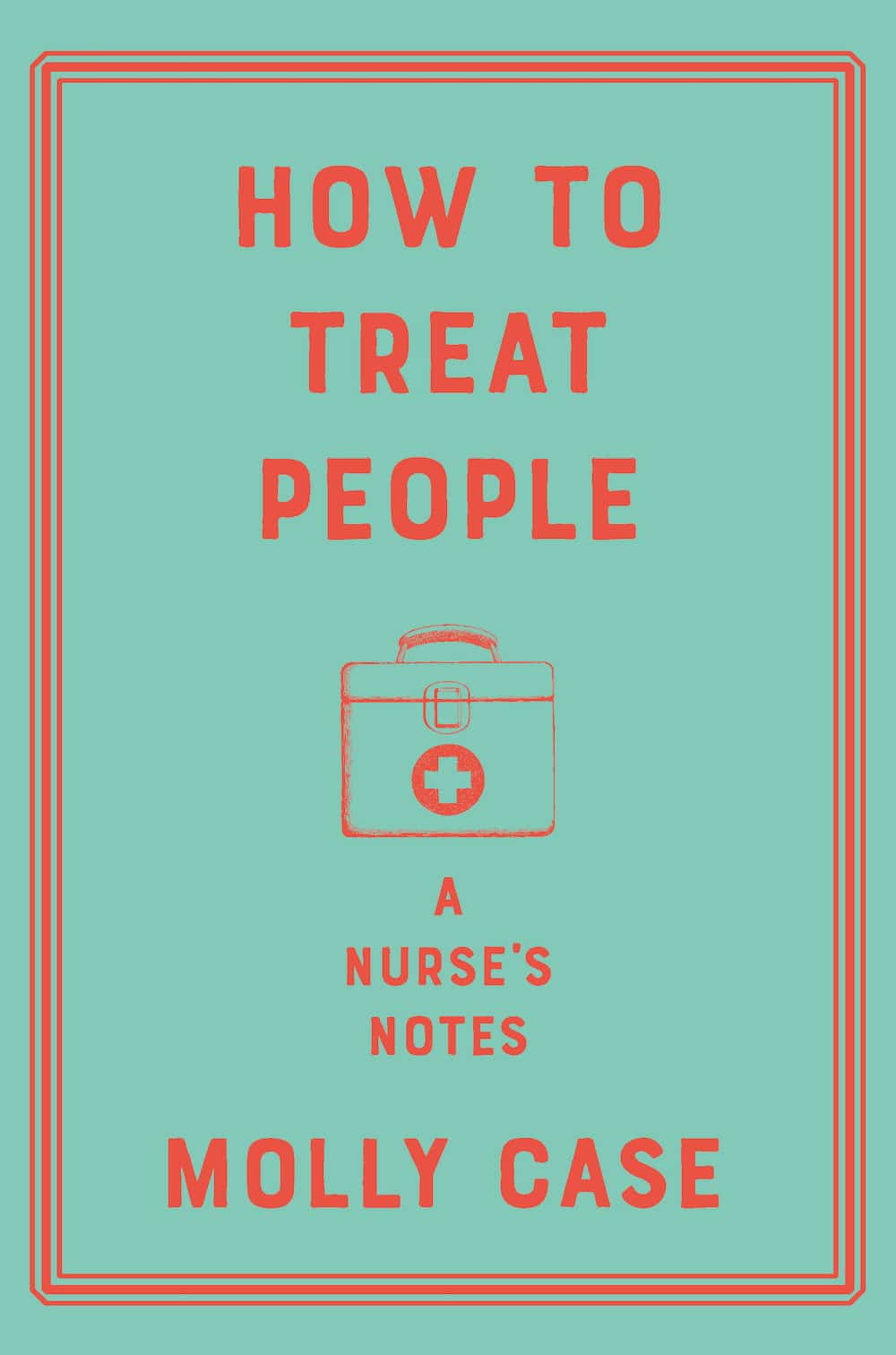Medical textbooks like Oxford Medical Education dryly state that “the aim of the ABCDE assessment is to keep the patient alive and achieve the first steps to improvement.” Emergency physicians and nurses across the world use the ABCDE assessment to evaluate deteriorating and critically ill patients, all sequentially focusing on a patient’s airway, breathing, circulation, disability and exposure to monitor key functions required for survival.

BOOK REVIEW — “How to Treat People,” by Molly Case (W. W. Norton & Company, 272 pages).
“This is where it begins,” Molly Case says of the ABCDE exam, which she uses as a framework to give shape to the colorful vignettes of diverse patients in her memoir, “How to Treat People: A Nurse’s Notes.’’ The result is an intimate and illuminating portrait of the private moments between patients, their families, and the nurses who care for them.
Case rose to prominence in 2013 with “Nursing the Nation,” a viral spoken word poem defending the nurses of the British National Health Service (NHS). And while her book does not mention Brexit and barely alludes to the struggles of the NHS after nearly a decade of austerity, I found it difficult to take her book simply as a constellation of touching narratives of patients and how to treat them.
For Britain is on the precipice of Brexit, and the NHS is at the center of a swirling funding controversy since the referendum in 2016. “How to Treat People” seems at least an implicit reflection on the state of health care in Britain at a critical point, if not a direct response to media depictions of “demonic and uncaring nurses,” that followed a critical 2013 report tying poor nursing care to hundreds of patient deaths at one British hospital.
Case presents a multiethnic London drawn from her work in the “high dependency unit,” where patients recover after heart surgery or heart attacks. One vignette centers on Farah, a Somali man who suffered brain damage after his heart stopped for a few minutes, depriving his brain of oxygen long enough so that while semi-conscious, he is unlikely to ever wake up again. Or Ranjit, an Indian man with a similar brain injury who seems to be making some recovery after months in a vegetative state.
Another focuses on Anna, a Polish immigrant who suddenly experienced devastating complications after heart surgery. There is Shui, a Chinese woman who needed heart bypass surgery, but had to have the jade bracelet she received at her wedding 50 years ago cut off in order to get it. Another patient, Ahmed, has paranoid delusions and believes an evil spirit known as a jinn is speaking to him through his phone.
Case concludes her memoir with pithy details of her visit to Calais, France, where she volunteered in “the Jungle,” the ramshackle refugee camp dismantled by French authorities in 2016.
Throughout the varied episodes, Case interweaves the professional with the personal. She describes her own difficulties with achalasia, an esophageal disorder that required surgery, and explores with tenderness her father’s various heart and circulation problems, giving us a window into the family’s coping mechanisms and recovery process.
While some memoirs can easily slip into oversharing, Case’s personal passages are scattered throughout the book, each one a shard in a larger mosaic.
Still, there’s something missing in many of Case’s chapters. While she illuminates the intimate details of patients and health care workers in extremis, the humanity of the staff often fails to come through: The all-too-real moments when someone lets their guard down, moments we are not proud of, our memories, our shame. To work in health care, especially caring for patients with myriad medical issues, is to be stretched increasingly thin. Yet we get little sense of this from Case. The nurses are always professional, the doctors curt or distant but invariably hardworking and stalwart.
In one example, a delirious patient named Shirley hurls epithets like ‘‘slut’’ at Case and other staff that seem to just bounce off. Shirley was brought to the hospital after her sister frantically performed CPR until the ambulance arrived, saving her life. Shirley’s heart had stopped for a brief period, leaving her confused and suspicious until the swelling in her brain receded. Yet despite the insults and frustrations, there is no sense of exasperation that front-line staff must feel at times when taking insults from those they are trying to help.
Shirley’s is a remarkable story of heroism and survival, but Case and other medical staff seem one-dimensional. This could be intentional to keep the focus squarely on Shirley, but it also keeps the reader at arm’s length from the nurses caring for her.
There are exceptions, like when Case breaks down after witnessing the turbulent death of a patient named Eric. She sets the scene vividly by placing us on the “dark and low-ceilinged” ward on a hot day. Eric, who has long suffered from chronic illness, had come to the hospital with difficulty breathing, which is treatable with medications that push his kidneys to excrete fluid and breathing masks that can help force oxygen into his blood.
But soon it becomes clear he is dying. Case grows frustrated that he refuses to keep his mask on, which would buy him time until the medications worked. We feel her sense of isolation as staffing constraints mean that other nurses are busy with other patients, while the doctor is off on another ward. By the time Eric throws the mask on the floor for the last time, his body still, we are crying with Case. And when her sister, also a nurse, later consoles her, we find ourselves nodding at her reassurances that because Case was there, Eric did not die alone.
That’s Case at her best. But the poignancy of these moments is often dulled by didactic passages: “Whilst electrical malfunction after cardiac surgery is common, the dysfunction can be an overriding cause of morbidity unless intervention is planned.”
Pedagogy comes as no surprise in a book titled “How to Treat People,” but the dryness of this impersonal voice, combined with its frequency — sometimes taking up full chapters — distracts from her otherwise empathetic prose.
But with the Royal College of Nursing warning that Brexit could significantly affect nursing staff, perhaps Case is trying in part to resuscitate an imperiled profession.
Compared with memoirs by physicians and patients, there is a relative paucity of nurse memoirs. Even if it occasionally drifts away from the compassionate portraits and emotional moments that are its heart and soul, “How to Treat People” suggests there should be far more.
David Scales (@davidascales) is an internal medicine physician at New York Presbyterian and an assistant professor at Weill Cornell Medical College.
UPDATE: A previous version of this story featured an image of the cover of the British edition of the book under review; it has been replaced with the American cover.










